Writing a good setting description can go a long way towards establishing the atmosphere of a narrative and giving it a sense of tangible reality for the reader. However, we can all sometimes be guilty of underemphasising this when it comes to teaching story writing.
Here are some tips and resource suggestions from experienced teacher Sue Drury to help your pupils create the perfect environment in which their character and plot can flourish…
Include setting description in your plan
As with all good writing, an engaging story starts with a good plan. As well as outlining the characters, overall plot, important events and so on, it is essential that this contains detailed information about the setting or settings (because there are usually more than one).
Encourage your pupils to form a clear picture in their heads of these locations. Note down specific details with key words and rich descriptions.
Try getting them to close their eyes and sit in silence while they create vivid pictures with their minds that they can then convert into words.
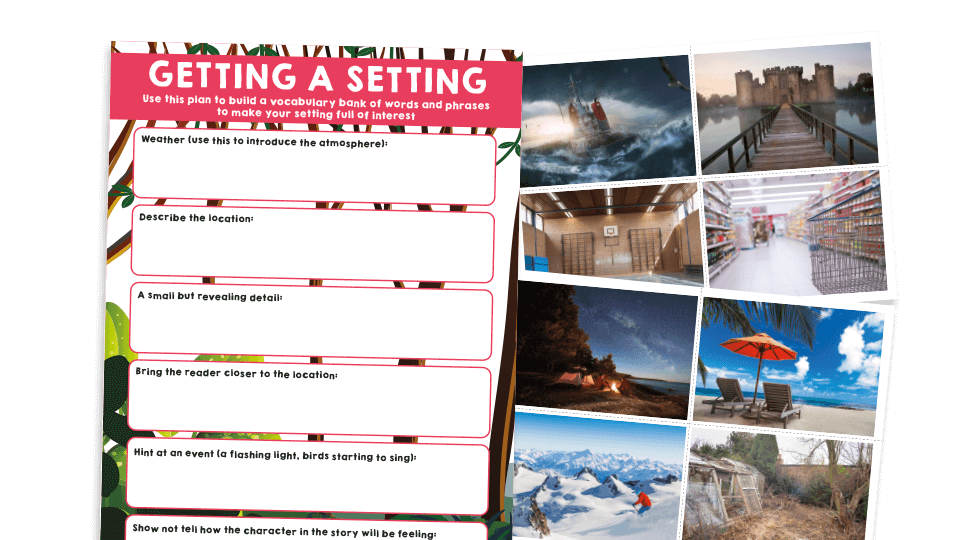 Story planning writing worksheets
Story planning writing worksheetsWhat’s more, urge them to focus on the little things as well as the big backdrops. After all, details often make a memorable difference.
To help them make sure that they cover all the important aspects of their setting, use our ‘Getting a Setting’ resource – part of our Effective Writing collection. It provides engaging images and structured worksheets to help pupils generate, organise and use vivid vocabulary to bring their settings to life.
Think about the senses
One of the first things to encourage your pupils to do is to engage all their senses when writing the setting.
The temptation is often just to describe what the character can see. However, sounds and smells can often connect more powerfully with people than what merely meets their eyes.
Even the sense of touch, like the chilling caress of a sudden breeze, can add to the atmosphere.
Setting descriptions – show, not tell
There are few hard-and-fast rules governing how to write a setting description. However, “show, not tell” has to be one of them.
Although this is more straightforward when describing characters and actions, you can also apply it to settings in the way that the protagonists interact with their surroundings. Even so, this does not totally negate the need for precise and evocative vocabulary.
Use good setting description examples
Much as we like to encourage pupils to use their very best words, it is possible to have too much of a good thing.
Forgive the sacrilege but, if we are honest, even some highly respected authors and well-loved novels can occasionally make you want to scream, “Get on with it!” as you plough bravely on through line after line of detailed description.
Encourage your pupils to focus on the things that really contribute to the establishment of a convincing setting. Ask, "Does this actually matter to the progress of the plot?"
Being able to share good setting description WAGOLLS is always invaluable in these situations. Of course, you could spend hours scanning through a stack of novels to find the perfect extract.
Alternatively, why not save yourself the bother by using our KS2 challenge mat for story settings? As well as providing model texts for pupils to study and discuss, it includes inspiring images to stimulate their own creativity.
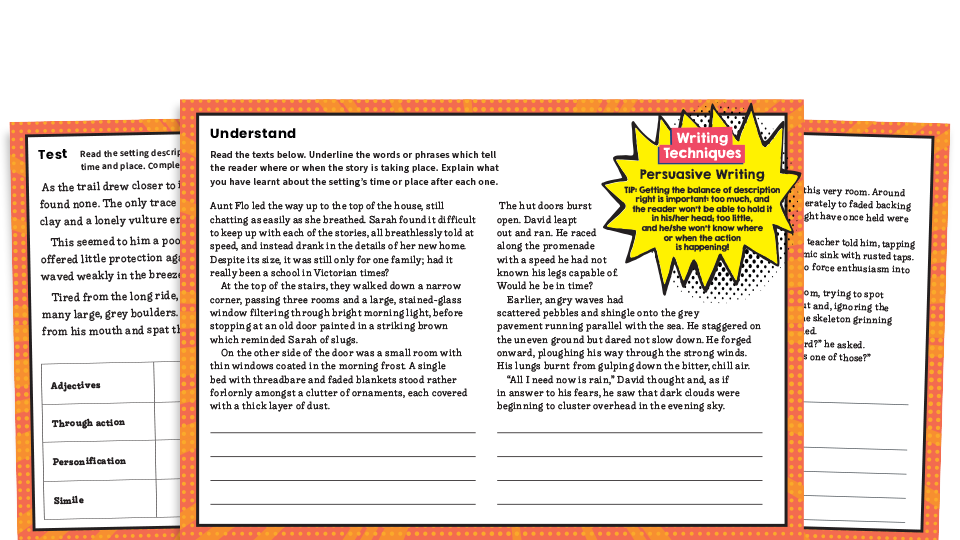 KS2 setting descriptions challenge mat worksheets
KS2 setting descriptions challenge mat worksheetsHistorical setting descriptions
Different fiction genres place different demands on the writer when it comes to setting the scene. Take historical novels, for example.
Part of the joy of these stories is that they can also function as a sort of informal history lesson. They can provide a fascinating insight into how people used to live.
That is why it is so important to help your pupils make the settings as realistic as possible. Include details that have a chance of informing as well as entertaining.
We can help here with our historical settings inspiration packs for KS2 pupils. Whether it’s Victorian Britain or the Wild West, these comprehensive resources provide all the images and inspiration your pupils will need to create a convincing backdrop for their stories set in these iconic times.
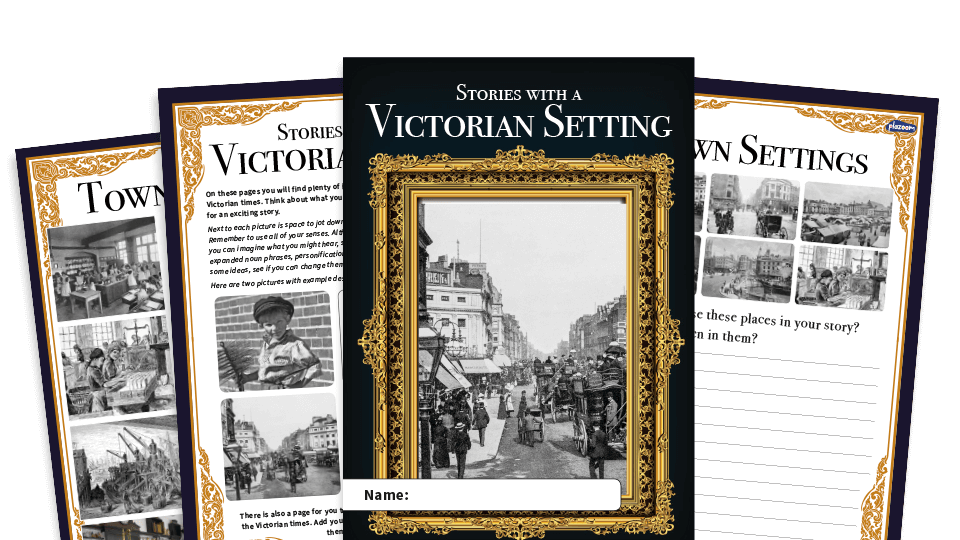 KS2 Victorian Era image prompts and inspiration pack
KS2 Victorian Era image prompts and inspiration packBeyond reality – creating your imaginary setting
Of course, not all stories are set in the real world. Although this gives writers more scope for letting their imaginations run free, they still need to have some form of containment.
Otherwise, the reader will be just too bamboozled to read very far. That is when planning becomes particularly important.
Fantasy adventures, for example, are set in places that, although familiar in many respects, are in fact different worlds.
Therefore, the writer needs a clear idea of where each key location is in relation to the others, whether it's the hero’s village, the wizard’s tower or the monster’s lair. That is why so many of these tales include a map at the beginning.
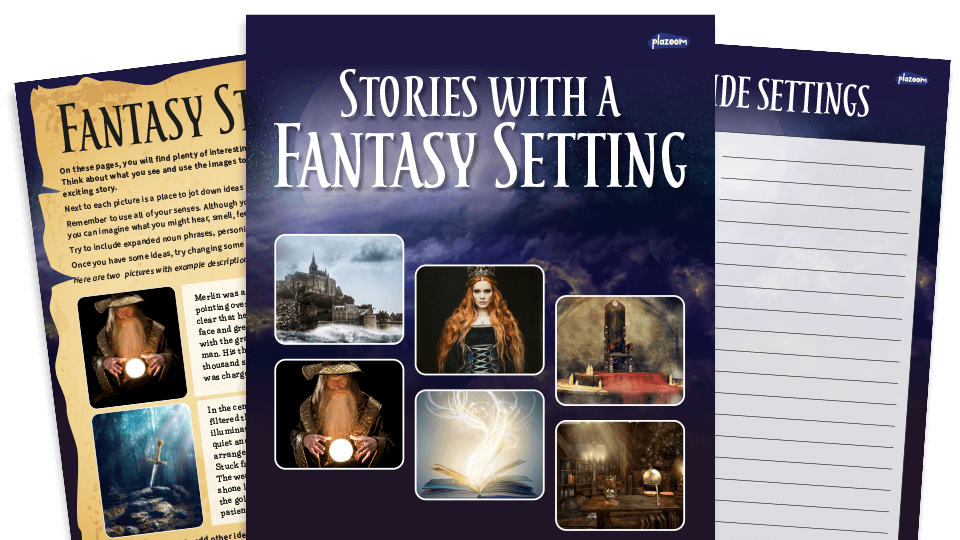 KS2 fantasy settings image prompts and inspiration pack
KS2 fantasy settings image prompts and inspiration packScience fiction tales also contain the problem of creating a whole new universe. This is why writers often constrain them to a limited range of locations, such as a particular planet or spaceship.
For both genres, our writing inspiration packs contain images, inspirational ideas and planning sheets to help your pupils create vivid settings for their stories.
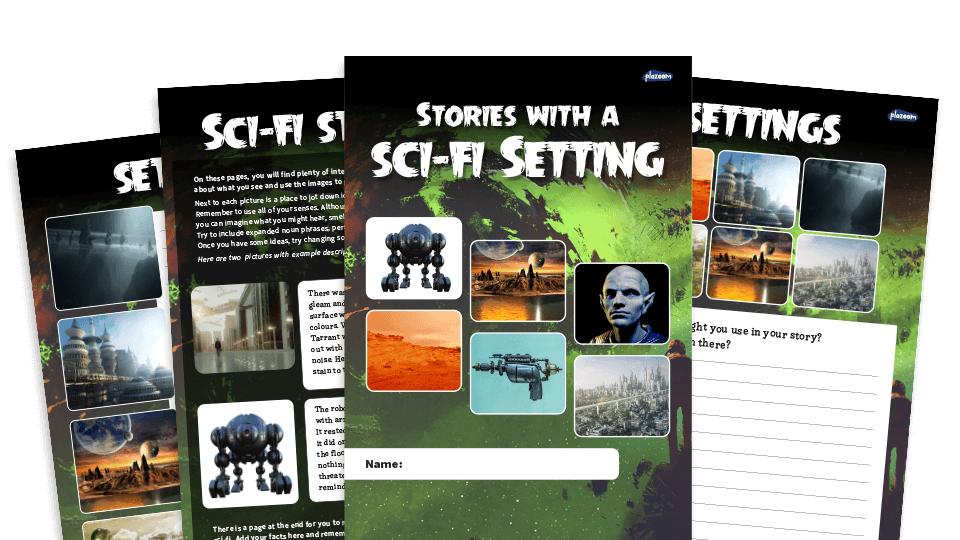 KS2 science fiction setting description inspiration pack
KS2 science fiction setting description inspiration packGetting going with your setting description
Whether it’s a short story, novel, non-fiction book, script or anything else, once they are happy with their plans, they still need to weave all the details into a coherent tale. Never underestimate how difficult it might be for children to pull all the elements together.
You might even find it necessary to provide more structured writing frames for when they ultimately start composing their stories.
Nevertheless, with a good setting firmly embedded in their minds, at least they won’t be starting with a blank canvas.
Sue Drury qualified as a primary teacher in 1999. Teaching pupils from Year 1 to Year 8, she has held a variety of positions including maths and English subject leader, year leader, and assistant headteacher. Sue has mentored students and NQTs, offering guidance and advice using her years of experience. She created many of Plazoom's literacy resources.